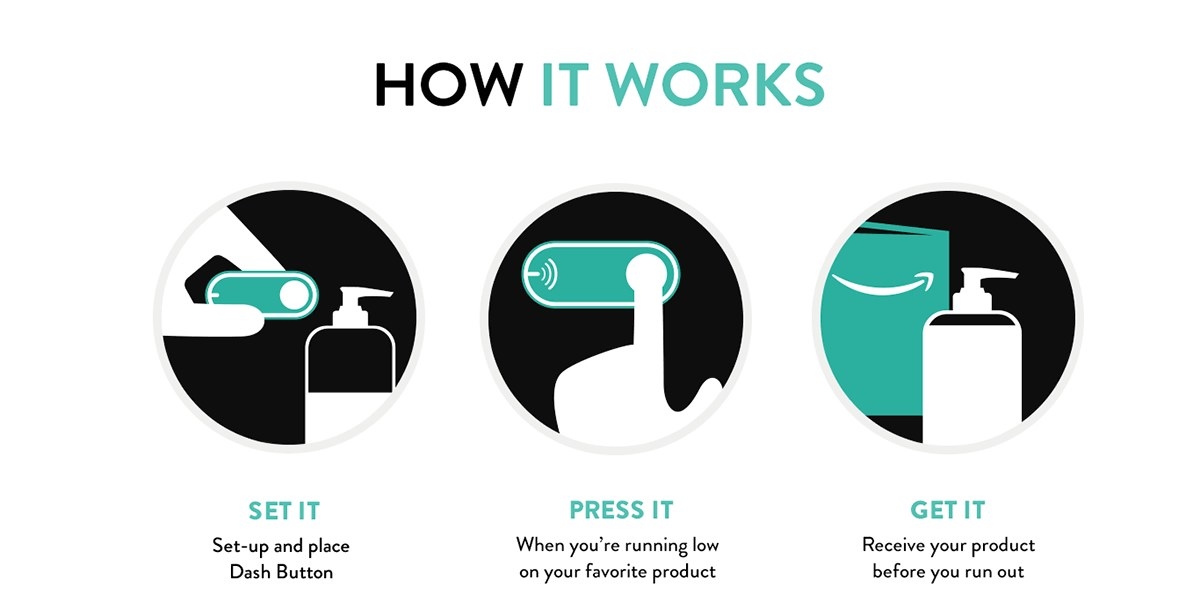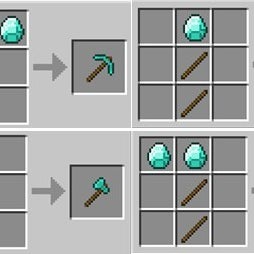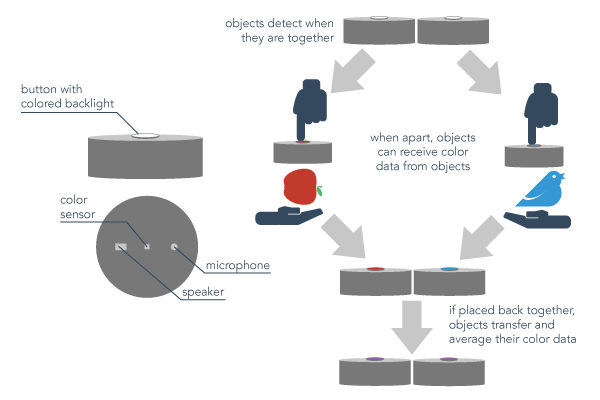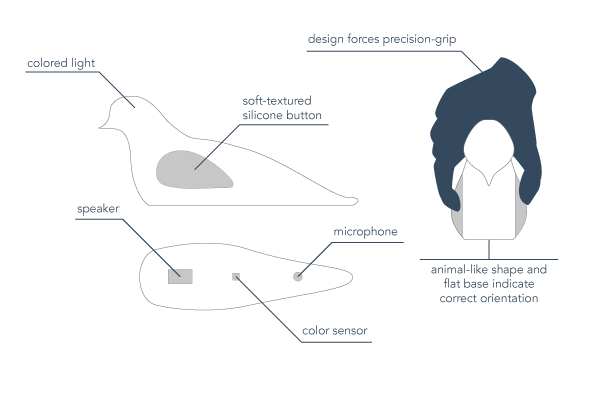We hate instructions.
But we love to experiment and play.
If no one reads instruction manuals, then the physical world has no tutorials. Users are intimidated by complex tasks, which poses a challenge for designers in hardware and IoT.
Many designers keep the user comfortable by simplifying the interface:

A dead simple interface is easy to use, but it can only do so much. In the case of the Dash Button, each device is only a single input.
Currently, we create IoT interfaces for simple tasks like re-ordering laundry detergent or finding out who is at the door. But the ability to connect any object to the internet puts us on the edge of much more.
We think machines should help us do less.
But we fantasize about machines that augment our skills and help us do more.
Augmentation increases what we are capable of, and it is more versatile than automation.
The fantasy is based in reality. People have advocated for augmentation since the early days of computing. But interfaces that augment can be harder to start using-- it is easy to tell Rosie to iron your clothes, and harder to get the hang of moving around in your own super suit. So how do we make it possible for users to adopt more complex tools if we can’t use a manual?
Easy.
We have been making easy-to-use, complex augmentation systems long before the internet.



Many of these systems are beginner-friendly even without manuals.
The piano is a self-instructing, low-barrier interface that augments musical ability. Even without a teacher, someone with a reasonably good ear can learn a scale. The players experiment, and the piano provides audio and visual cues through sound and key color and position. Without anyone to onboard them, they play a scale and maybe more. After a certain point, they don’t find the manual intimidating. If they are interested in further use, they seek instruction themselves.
I won’t argue that every interface should augment a skill, as the piano does for the musically minded. But IoT shouldn’t be limited to single-use buttons just because people won’t read manuals or sit through formal tutorials.
People use complex systems all the time in toys and games, where even a child can learn through low-consequence play:


This no-manuals experimentation could apply to emerging devices that would otherwise have a complex set of instructions. I wanted to play with that idea, so I built a system that needed instructions and redesigned it for playful learning.
Here are the original (boring) instructions:

This interface is unfamiliar and counterintuitive, so the instructions are necessary. It’s not playful or interesting, and the user is not motivated to find out more.
Here's my playful re-design.


The shape of the birds, combined with audio/visual feedback, allows for experimentation and mastery of a step-by-step process. In other words, despite the complexity of the system, anyone who played with the birds could learn how to interact with them on the go.
Incredible work by @christinesunu ! Detecting colors and arpeggios!
Most devices won't be as whimsical as this "sound herd," but I expect many of them could be equally (if not more) complex. I believe that careful design can make them easy to use, as well as playful, interesting, instructive, and fun.
I could say more about pianos, high-ceiling interfaces, connected hardware, and communicating with sound, but let’s be serious. This post is already too long, and you’d rather be building, engaging, and playing in the real world.
Want to build the birds yourself? The sound herd is open source! Check out the GitHub repo.

The Open Lab for Journalism, Technology, and the Arts is a workshop in BuzzFeed’s San Francisco bureau. We offer fellowships to artists and programmers and storytellers to spend a year making new work in a collaborative environment. Read more about the lab, read more from Christine, or check out Christine’s website.
